
What is a DDoS attack? How to Prevent DDoS Attacks?
December 23rd, 2019
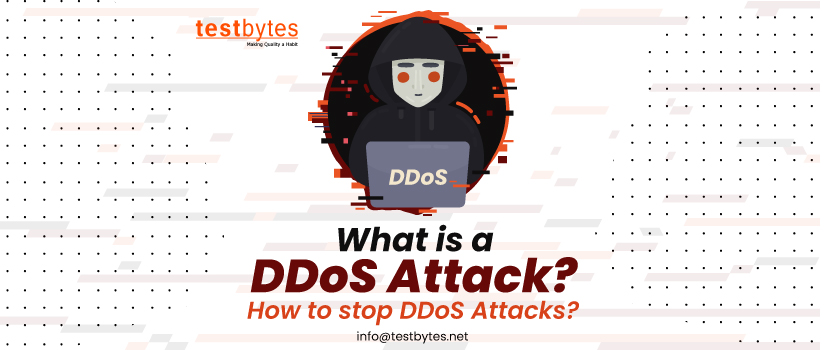
In a world dominated by the digital world, everything seems to be just a click away. Our dependence on digital media has grown manifolds in the past couple of decades. But this dependency has also given birth to many notorious activities, and one of such activity is DDos attack.
Overview of DDoS Attacks:
- What is a DDoS attack?
- Why DDoS Attack?
- Duration of DDoS Attack
- DDoS attack Symptoms
- Types of DDoS attack
- DDoS attack Tools
- How to Protect Your Website From DDoS Attacks?
- What’s DDoS threat intelligence map and what’s it used for?
- The Crime and Punishment of DDoS attacks
- How to identify DDoS attacks?
- DDos attack process
- Reasons for DDOS attack
In this article, we will learn more about DDoS attacks.
What is a DDoS attack?
DDoS attack or distributed denial of service attack is making it impossible to deliver the service to its end customers. In this kind of attack access to almost everything including s devices, servers, applications, services, networks, etc. is prevented.
The difference between DoS attack and DDoS attack is that in DoS attack malicious data or requests are sent from one system whereas in a DDoS attack it can be sent from multiple systems.
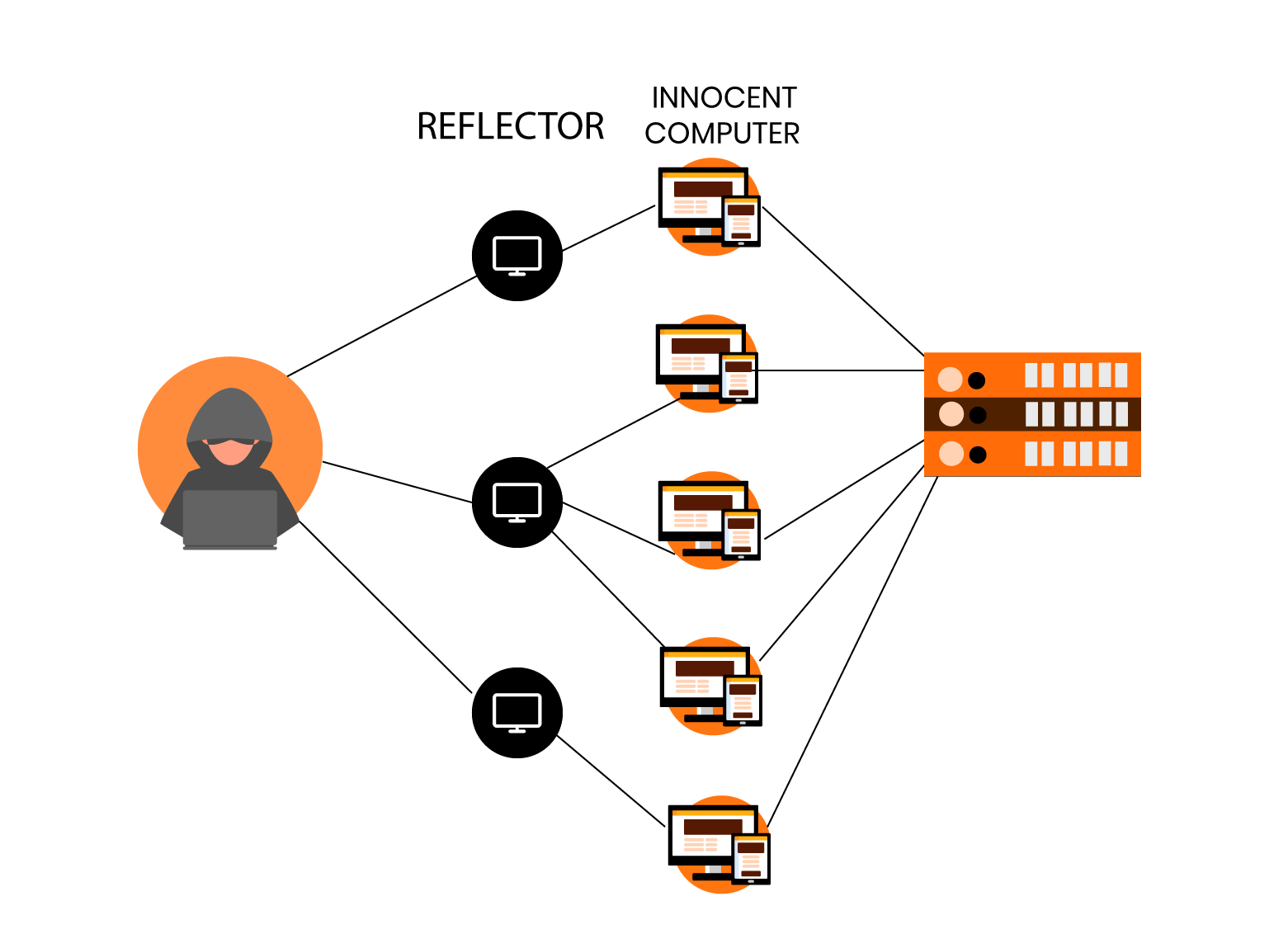
Multiple requests for data are masked to the system to initiate this attack. It could be done by either extensive request to the webserver to serve a page so that it ultimately crashes because of high demand. The other way is to a large number of queries are hit to the database to slow it down and ultimately crash it.
It could result in minor breakdown or disruption in services or the complete breakdown of websites, applications, or taking the complete business offline.
Why DDoS Attack?
DDoS attacks are initiated to crash the website. The main aim behind such attacks is to make the digital services of the businesses unavailable to its customers.
Duration of DDoS Attack

The duration of the DDoS attack depends on whether the attack is on the network layer or application layer. Network layer attacks can extend up to 48 to 49 hours whereas Application layer attacks can be effective for 60 to 70 days.
DDoS attack Symptoms
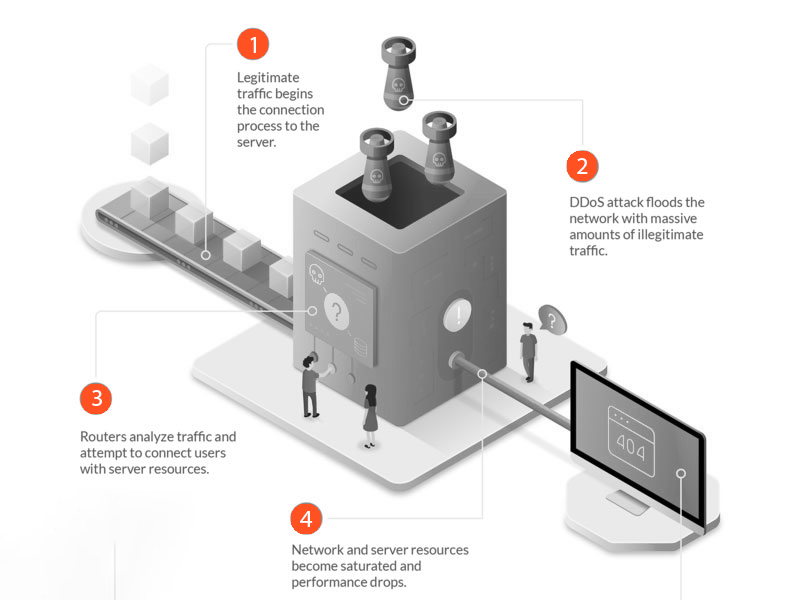
Some of the symptoms of DDoS are:
- Downed server or system
- Too many legitimate requests from legitimate users
- A cut cable.
It might require traffic analysis for precise analysis.
Types of DDoS attack
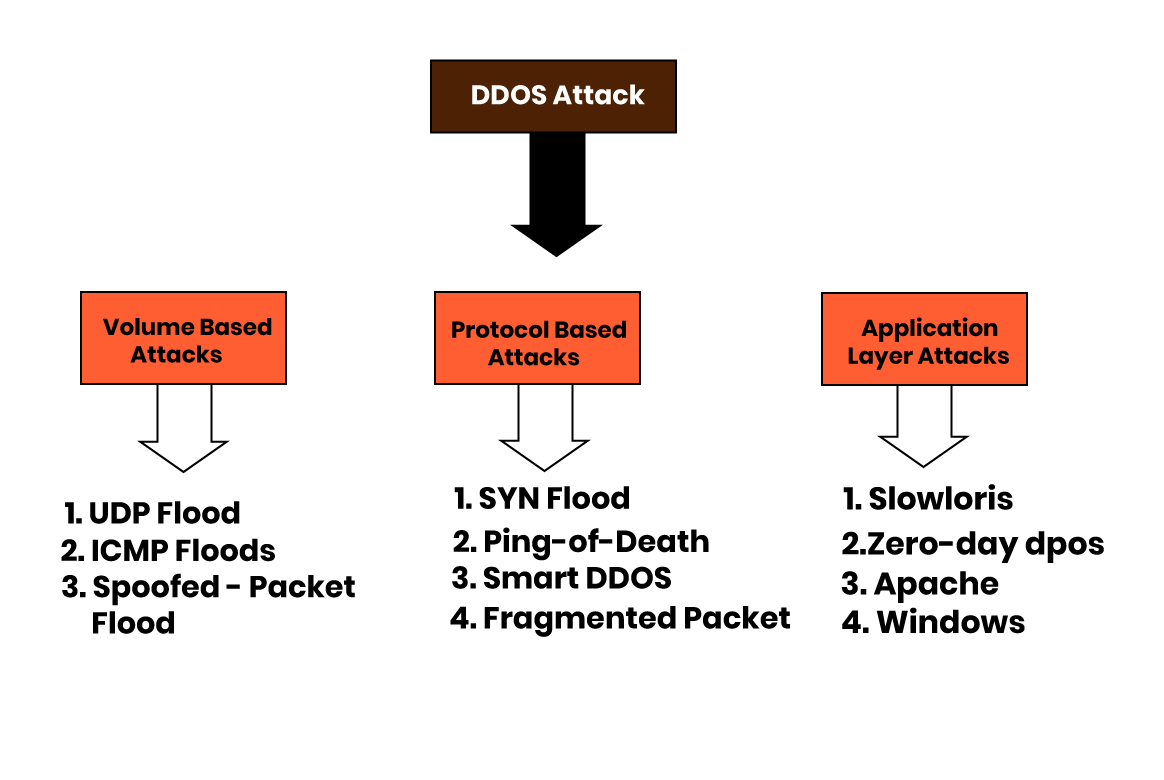 There is a rise in DDoS attacks in the past few years. and even the attacks are now getting stronger and more harmful. In such a scenario it becomes important to take mitigate these attacks to avoid any future security risks.
There is a rise in DDoS attacks in the past few years. and even the attacks are now getting stronger and more harmful. In such a scenario it becomes important to take mitigate these attacks to avoid any future security risks.
To avoid these attacks you should be aware of various types of DDoS attacks so that you can protect yourself from them.
Also Read : Why Python is Used For Cyber Security?
Here are some common types of DDoS attacks:
1. UDP Flood: UDP flood or User Datagram Protocol is a common DDoS attack method where random ports on the target machine are flooded with packets.
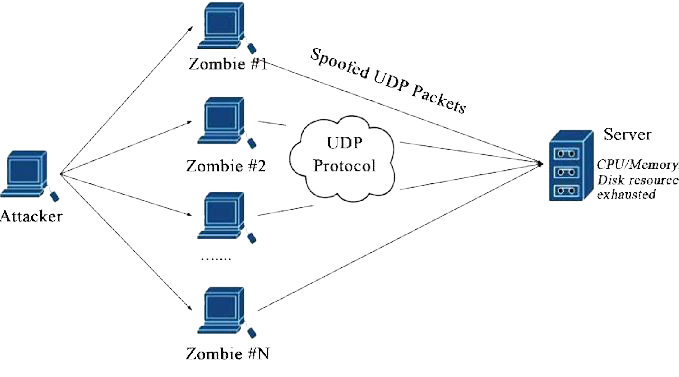
2. SYN Flood: In SYN flood attack repetitive hoaxed requests are sent to a target server from various sources.
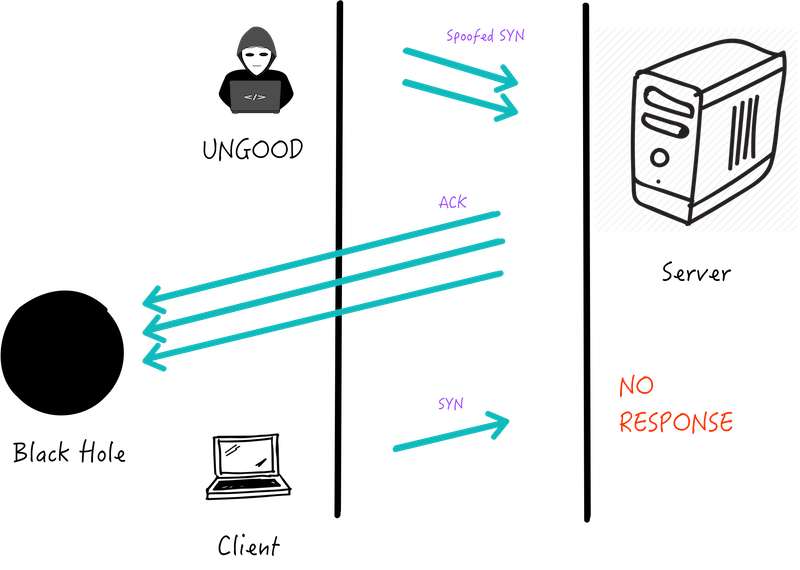
3. Ping of Death: Ping of death (”POD”) sends packets exceeding allowed byte size to manipulates IP protocol.
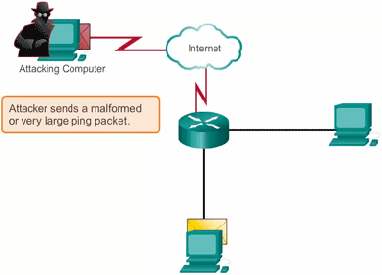
4. Reflected Attack: A reflected attack is initiated by sending forged packets to multiple computers.
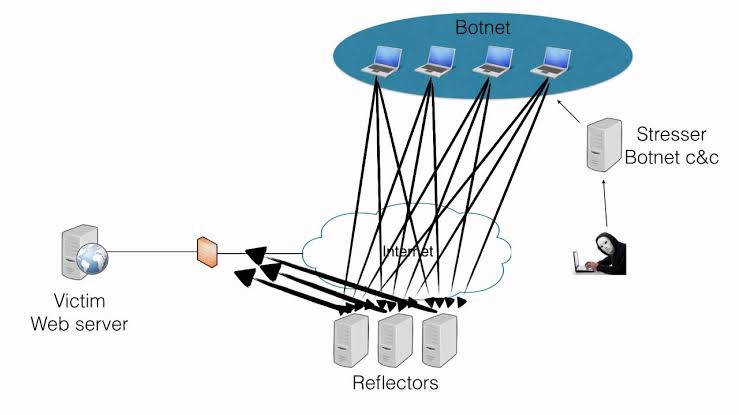
5. Peer-to-Peer Attacks: Peer-to-Peer uses a peer-to-peer server to divert traffic to the target website.
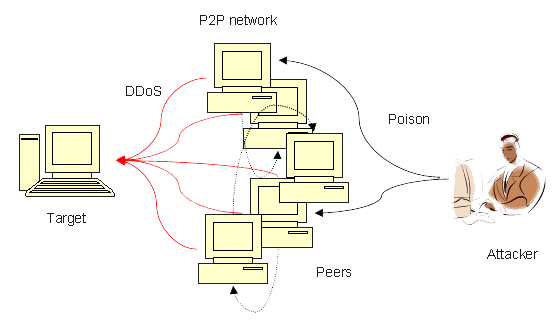
6. Degradation of Service Attacks: Degradation of Service Attacks only slows down the server response times instead of taking the website or server offline.
7. Unintentional DDoS: Unintended distributed denial of service refers to congestion in web traffic that causes website/server breakdown.
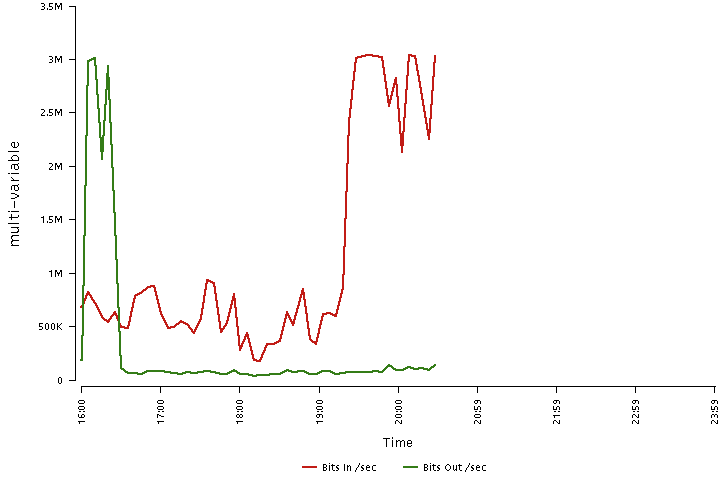
8. Application Level Attacks: Application-level attacks focus on attacking one – or a few – applications.

9. Multi-Vector Attacks: In multi-vector attacks, a group of tools and strategies are used to bring websites and servers offline.

10. Zero-Day DDoS: A “Zero Day” based attack to date has no patches.
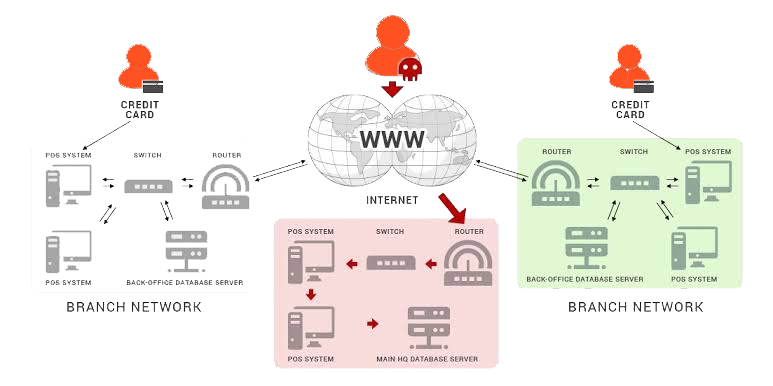
We have seen various DDoS attacks, and all of these can adversely affect your website’s performance.
DDoS attack Tools
Various tools are available that can initiate a DDoS attack, some of the common ones are:
- HULK: HTTP Unbearable Load King or HULK is created for research purpose is to initiate attacks on the webserver.
- Tor’s Hammer: Created for testing purposes, it helps initiate slow post-attack.
- Slowloris Tool: It helps to make the server down.
- LOIC: Low Orbit Ion Cannon is a free and popular tool that is easy to use.
- Xoic: it is a DDoS tool for small websites.
- DDOSIM: DDoS Simulator simulates the real DDoS attack on the website and network.
- RUDY: R-U-Dead-Yet is a long-form field submission DDoS that initiates the attack through POST method
How to Protect Your Website From DDoS Attacks?
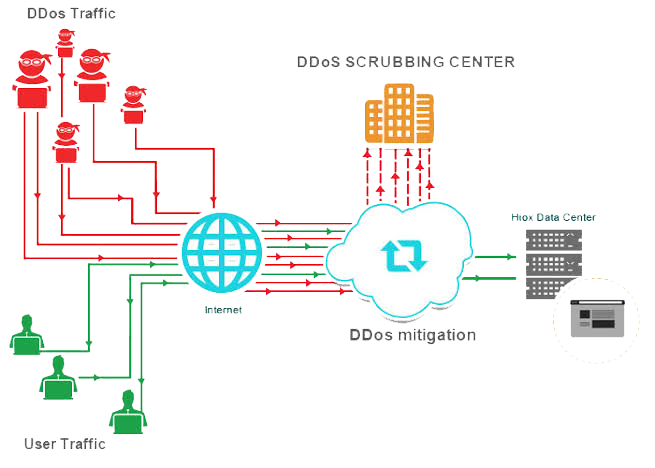
DDoS attacks have become very common in the past few years. India is Among Top 10 Sources for DDoS Attacks in Q2 2015: Akamai
Even the biggest brand has been under the most exceptional cyber-attacks in the history of the internet.
1. Create an Action Plan in Advance
Precaution is always better than cure; prepare an action plan that helps mitigate the DDoS attack risk to a large extent. Though it cannot guarantee 100% security for the risk but can help protect your website to a great extent.
2. Monitor Traffic Levels
Monitoring your traffic levels is another efficient way to protect your website from DDoS attacks. An unexpected and unusual traffic level should raise an alert.
3. Pay Attention to Connected Devices
Connected devices are an easy gateway for hackers to initiate a DDoS attack on your website/server. Keep keen attention to these devices. And for more protection keep changing their passwords regularly and switch them off, when not in use.
4. Ensure You Have Extra Bandwidth
Have an extra bandwidth, it will give a scope to accommodate extra traffic and will give you time to fight the attack.
5. Train Your Customers On Security
Educate your customers to take care of their security. Ask them to follow cyber-security best practices to avoid any such risks.
6. Set up Secured VPS Hosting
Just to save a few bucks, don’t go for the lowest price hosting plans. Set up a secured VPS hosting that will provide you with DDoS protection and will reduce the chances of the attack.

7. Drop Packets from Obvious Sources of Attack
Ensure that you have proper arrangements to stop traffic from false sources. Instruct router to drop packets obvious attack source IPS.
8. Purchase a Dedicated Server
Have your own dedicated hosting server to have more bandwidth, control over security, and countless resources.
9. Block Spoofed IP Addresses
Blocking spoofed IP addresses is another way to prevent DDoS attacks.
10. Install Patches and Updates Frequently
Installing updates lessens the DDoS attack risk.
11. Use Proxy Protection
Use of proxy can give you extra protection from DDoS attacks; hence consider it as one of your rescuers.
12. Set up RST Cookies
RST cookies are a good way to protect your website from DDoS attacks.
What’s DDoS threat intelligence map and what’s it used for?
None can predict the timing of DDoS attacks. All you can do in this kind of situation is to trace the locations where the weaponry is stored in. By knowing so, you can build a defense system that’s more effective than anything. The map should have millions of entries that can be changed dynamically to make the map proactive.
The Crime and Punishment of DDoS attacks
Who are behind this devastating attack? Statistics state that most teenagers are behind d such hideous attacks and they are raking millions of dollars as we speak.
What’s the punishment for a person who’s doing the DDoS attack? First, you need to trace the DDoS attack to put the person who is behind the heinous crime behind bars.
There is another concept behind the attack. Most of the times DDoS attack acts as a mask to perform Phishing and pharming, the most lucrative forms of attack.
Know about : Major Cyber Attacks on India (Alarming News)
DDoS attacks usually happen by flooding and it’s performed by botnets, thousands of them at a time. Owing to the same it’s hard to trace such attacks.
However, Just like any other computer and internet-related offenses, performing DDoS attacks with bad intentions punishable under the law of respective countries.
DDoS Attack Frequency by Industry
DDoS attacks are indeed devastating. But wich industry is prone to frequent DDoS attacks?
Have a look
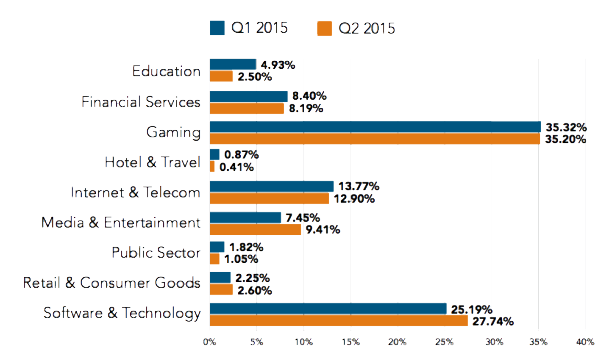
How to identify DDoS attacks?
the worst part about this kind of attack is that there won’t be any prior warning before the attack. Since the attack is mainly performed as a masking mechanism to perform another type of attack, unpredictability is the key behind such attacks.
usually what happens is that a website will be bombarded with traffic to an extent where the website will be down for hours or even days.
However, there are certain things you need to monitor that can reveal the attack

For instance,
- An IP address that makes a huge volume of requests at a time
- 503 error
- TTL (time to live) on a ping request
- Slowness issues
- Huge spike in traffic
Explaining the DDoS attack process
DDos attacks might seem simple, but initiating a DDoS attack is not that simple. Though the outcome is just depriving the users of the services, but behind the scene there goes a lot of planning and efforts.
DDoS attacks works on the different layers of the network connection. These attacks focus on a certain layer.
To name a few:
- ICMP Floods, Smurf Attacks, and IP/ICMP Fragmentation focuses on layer 3 that is the Network layer.
- UDP Floods, SYN Floods, and TCP Connection Exhaustion focused on Layer 4 that is the Transport layer
- HTTP-encrypted attacks Focuses on layer 7, the Application layer.
The most common method of initiating a DDoS attack is through bots or what we commonly known as “zombie computers”. A network of such bots , which is referred to as a botnet is used to send huge amount of data to the targeted websites, servers, and networks which they cannot accommodate.
Botnets are a network of thousands to millions of computers managed by cybercriminals. They hack the computers and these computers unknowingly become the part of DDoS attack; yours could be the one.
What are the reasons for DDoS attacks?
DDoS attacks are very prevalent and are becoming hugely common in past few years.
Some of the common reasons why hackers activate these attacks are:
- Ideology : Many times if hackers does not agree with some ideology they find DDoS attacks as an easy way out to disgrace the website.
- Business feuds – Business rivalries are another common reason for attackers to activate a DDoS attack on the business rivals site. Mostly it is done to stop them from attending a particular event.
- Boredom – Another weird factor is boredom, hackers just initiate a DDoS attack because they want to have fun and to kill their boredom. It gives them peace.
- Extortion – extortion can be another reason where hackers initiate DDoS attacks to blackmail the victims and ask for money in return.
- Cyber warfare – it has been seen that sometimes countries authorized such attacks to cripple component countries infrastructure.
Conclusion:
Cyber attacks are a big threat to the digital world. There are various types of cyberattacks that possess a threat to the security of individuals /businesses to present online. One such type of attack is DDoS. It overburdens the website /server and makes it impossible for businesses to deliver their services through digital mediums to their customers.



 Software Testing Events
Software Testing Events App Testing
App Testing Web App Testing
Web App Testing Game Testing
Game Testing Automation Testing
Automation Testing Load Testing
Load Testing Security Testing
Security Testing Performance Testing
Performance Testing Hire a Tester
Hire a Tester





